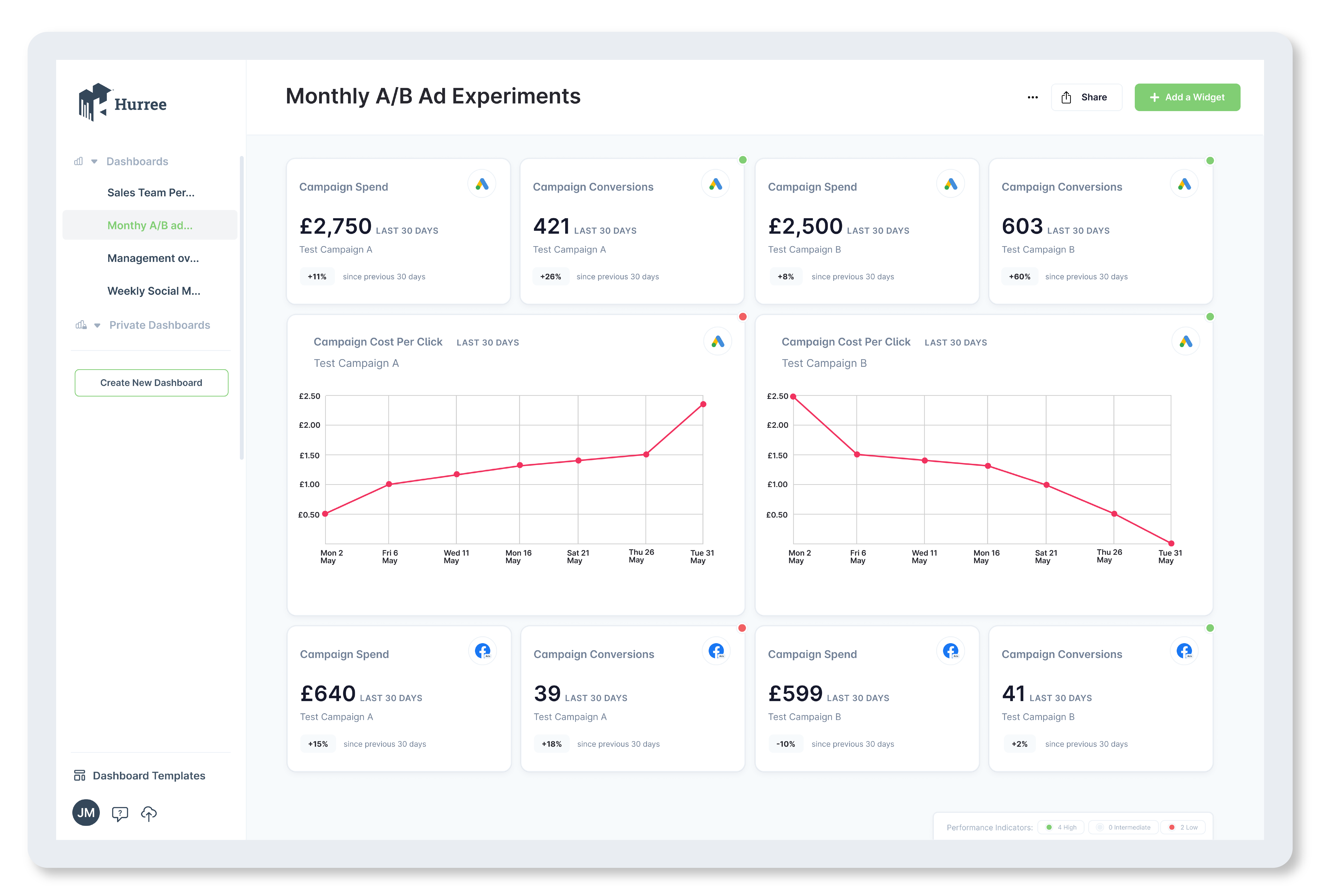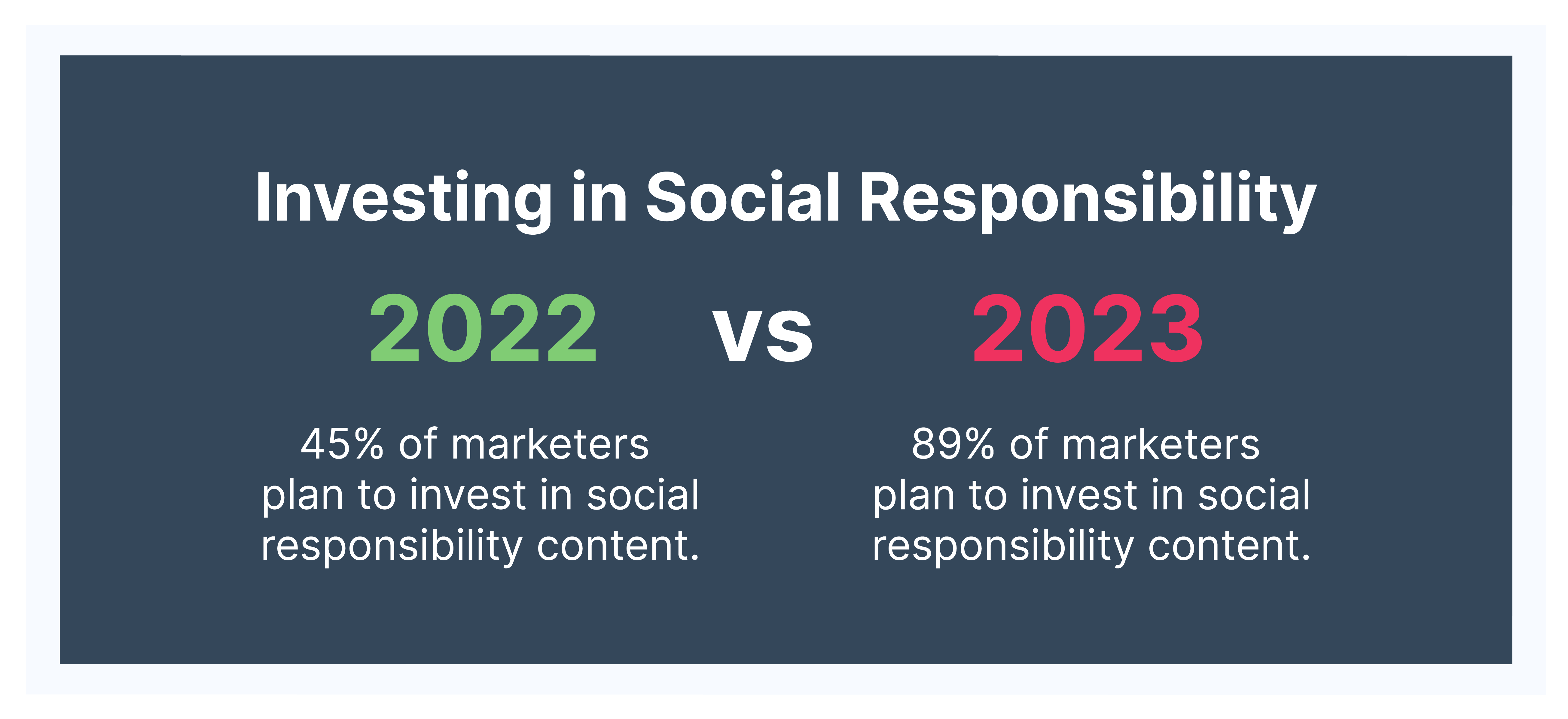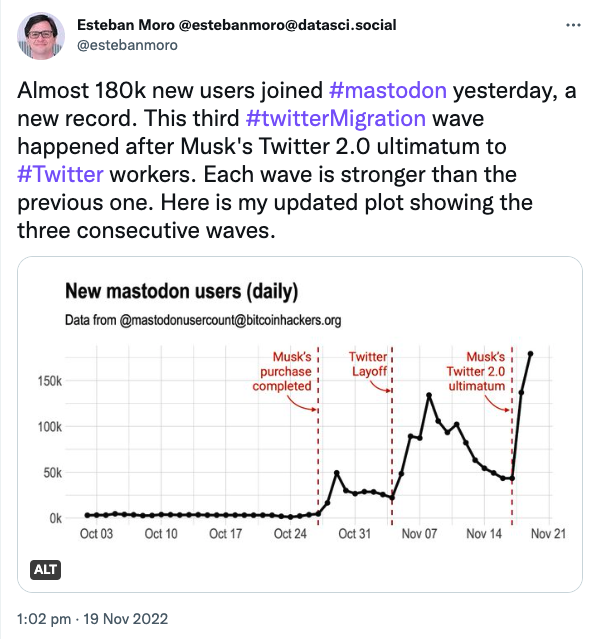The Top Marketing Trends of 2023
Every marketer’s favourite time of year: planning season. If you’re on marketing twitter or marketing TikTok, you’ll have seen the plethora of marketers in the midst of planning for 2023. While it’s an important task, I’ll admit, it’s not always fun.
We’ve written before about how to put together a successful marketing strategy, but one of the most important elements to this is being aware of what’s going on in both your industry and the marketing world. In fact, this is true for more than just marketers. Any leadership team - from CEOs and CFOs to Sales Directors and Operations, should be aware of what’s going on, not just in their own domain, but - at least at a high-level - across all facets of the company.
Before we get into what to expect in 2023, let’s take a look at a few trends that made an impact this year:
- Vertical video: TikTok and Reels have made quite an impact on the marketing world. Between July and October alone, reels grew by 220 million users and TikTok is on track to reach 1.8 billion users by the end of the year. A large portion of consumers are watching videos on their phones, so more marketing content is being shot vertically.
- AI content writing tools: There have been a host of new tools that have gained popularity for marketers. Using sites like Copy.ai has helped marketers refine their copy, but it’s also something to use carefully - Google introduced an update this summer that prioritises copy “written by people for people.”
- TikTok marketing: While TikTok’s user base blew up in 2020, business and marketers have really ramped up their efforts this past year (present company included). Organic growth is important on TikTok, but marketers have also been using their ads feature for a very simple reason - it’s cheaper than a lot of other social media platforms.
- In-person events: While virtual events are still quite popular, the easing of travel and COVID restrictions led to an increase in the number of in-person events held this year. In fact, in Q4 2021 and Q1 2022, in-person and hybrid events increased by 255%.
- Long-form content: It’s been on the cards for a while, but 2022 saw a real shift back to long-form blog content. Think of how-to guides, expert industry analysis, etc. Google is prioritising helpful content and rich copy, so long-form content is the way to do that (for now).
Ok, we’ve set the scene. 2022 was very much about marketers catching up with trends across the channels and tools that they rely on. But what does 2023 have in store? Only time will, but here are our predictions.
1. Zero-party data
You’ve probably heard of first and third-party data, but what is zero-party data? The term was created by Forester Research in 2020 and refers to data customers ‘intentionally and proactively share with a brand.’
But isn’t that just first-party data? Technically, no. First-party is more the data you can collect yourself on your website about user behaviour - what pages they visit, CTAs they click, etc. Zero-party data is the information those users provide you themselves. This is more like form fills, preference centre, etc.
The emphasis on zero-party data comes off the back of increasingly strict privacy regulations (GDPR, CCPA). Oh, and a little company called Google ending third-party cookies on Chrome. The removal of these types of cookies from the browser will make it harder for digital marketers and advertisers to track user activity across the web, which is a big part of creating a successful targeting strategy.

Source: Backlinko
That’s where zero-party data will (hopefully) come in. Getting information directly from users and prospects will help create that complete picture marketers need to do their jobs effectively.
2. Interactive content
Part of that creative endeavour will come in the form of more interactive content. Driving zero-party data means you need content that people are willing to engage with and for which they’re willing to part with their data.
So, in this marketer’s opinion, 2023 will see a move away from static content to more interactive and high-impact alternatives. These include things like:
- Quizzes
- Interactive infographics
- Maps
- Calculators
- Games
- Interactive videos
This type of content turns what is usually a static experience into a conversation that allows the user to get to know your brand, but also for the brand to get to know the user. And, importantly, it is a way to increase your audience engagement and generate more leads. A win-win!
3. Shorter video
We all know the stat:

Source: Devrix
While marketers have known this for a while, the rise of short-form video formats like TikTok and Instagram Reels are proving that for video, sometimes shorter is better. Even YouTube has introduced Shorts. That’s not to say that there isn’t room for longer-form video, but with the way people are consuming content, it’s becoming increasingly rare for the average user to watch videos longer than 60 seconds on a regular basis.
And marketers are taking note. According to HubSpot, ‘90% of marketers using short-form video will increase or maintain their investment next year, and 1 in 5 marketers plan to leverage short-form video for the first time in 2023.’
Marketers, then, are going to have to become very succinct in order to get their content in front of their users in any sort of meaningful way. This may actually benefit them, as shorter videos take less resource to create. If you’re looking for some inspiration on how to utilise short-form video, here’s a list of brands that are doing some great things on TikTok.
4. Agile marketing
You’ve probably heard of agile, but with the changing market and landscape, it’s becoming increasingly relevant to marketing. Agile marketing focuses on flexibility and collaboration. The goal of agile marketing is to quickly adapt to changes in the market, customer needs, and the competitive environment.
In agile, marketing teams work in short iterative cycles, called sprints, testing and implementing marketing strategies and tactics quickly. Agile allows marketers to gather feedback and data, and use that information to make ongoing improvements and adjustments to campaigns and strategy.
The key tenets of agile marketing are:
- Experimentation
- Frequent ‘releases’
- Putting the user - in this case your target audience - first
Why is 2023 the year of agile marketing? The marketing landscape moves so quickly; a strategy full of big releases that take months to plan quickly leads to obsolescence. What was popular in January will be gone by March. Agile allows marketers to adapt quickly while still staying on message and on strategy.
5. The rise of zero-click content
This summer I came across an interesting article. Zero-Click Content: The Counterintuitive Way to Succeed in a Platform-Native World by Amanda Natividad who explained the concept of zero-click content. This type of content “offers valuable, standalone insights (or simply engaging material), with no need to click. Clicking might be additive, but it’s not required.”
In other words, it’s creating content that is meant to be consumed on the channel natively - think of Twitter threads, LinkedIn carousels, even certain types of TikTok videos. And her reasoning is convincing; no one goes on a social media platform or another tool with the intention of clicking off it. In fact, making the user click off of that platform can actually prevent them from engaging. This type of marketing is all about building relationships and creating value for the user so that, when the time comes, they turn to you to fulfil their needs.
As more people turn to social media as their main means of communication, marketers are getting wise to their wants and needs. Hence, in 2023 I suspect we’ll see a lot more content that is meant to be consumed on the channel rather than pushing consumers to a landing page or form.
6. More reliance on data
The world is undergoing what some are hesitant to label a recession. Whether you use that name or not, businesses and consumers are looking to maximise every pound/dollar they spend. For marketers, this means they really have to harness their campaigns to target the right people. That’s where data comes in.

As businesses look to maximise ROI and tighten budgets, marketers are going to have to ensure their campaigns are successful. That involves getting the right message to the right people, using the right channel. The only way to do this is to dig into your data.
This may materialise in the form of more reliance on data tools like Hurree and rising demand for trend and audience data from third-parties. Whatever it looks like, just know that getting your data right in 2023 will be very important.
7. More emphasis on social responsibility
Did you know that 64% of Gen Z will pay more for environmentally-friendly products? While they are not the majority in the consumer base yet, they along with millennials, are shifting the way businesses think about marketing.
One of the ways we’re seeing that take shape is through an emphasis on social responsibility. Companies are no longer faceless corporations that only have to create a product and market it. Consumers, along with job seekers and other businesses, are demanding accountability from the organisations they interact with. More than 4 out of 5 Millennial and Gen Z adults believe companies should take a stand on social issues. Think things like racial justice, LGBTQ+ rights, gender inequality, and climate change.
And that’s why marketers are shifting focus towards showcasing their company’s social responsibility initiatives and credentials. It’s not about generating leads per se, but about building trust with your audience and consumers so that, when the time comes, they feel comfortable supporting your business.

Source: HubSpot
8. The death of Twitter?
We couldn’t get through our 2023 predictions without touching on Twitter. Has the early death of Twitter been greatly exaggerated? Well, maybe. It’s hard to tell. The news about the social media juggernaut changes as quickly as you can catch up to it.
One trend that is noticeable - Twitter is losing users. In fact, Technology Review estimates that, as of November 2022, Twitter may have lost 1 million users (a combination of people deactivating their accounts and accounts being suspended).
As mentioned previously, marketers are under even more pressure to maximise their ROI, so putting time, effort, and money into a social media platform that’s shrinking isn’t ideal. Plus, given all the rumours and news about staff leaving Twitter, it’s hard to say that it will still be here 6 months from now in its current iteration.
The result, I think, will be marketers embracing both established and new platforms to reach their audiences. TikTok ads is already seeing a spike in usage, and Mastadon - “a decentralized, open-source software that allows users to set up servers to communicate with each other” - has grown exponentially.

Whether it takes off as a Twitter alternative, marketers are starting to look elsewhere to share their content. What that looks like is still to be determined, but 2023 is likely to continue the shift away from the “bird app’.
2023, in short, will be the year of data. Hurree's powerful dashboards can help you make sense of all of your data and present it in a way that drives informed, data-driven decisions. Try now for free.
Share this
You May Also Like
These Related Stories

Top Marketing Trends 2024: Future Insights and Predictions

4 Marketing Trends Incoming in 2022




